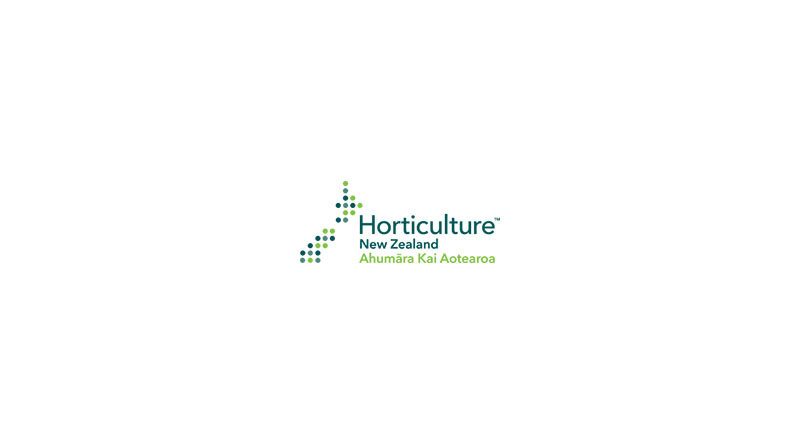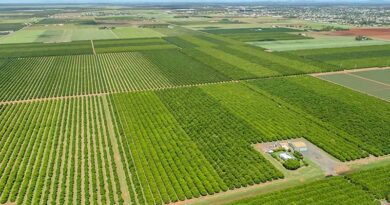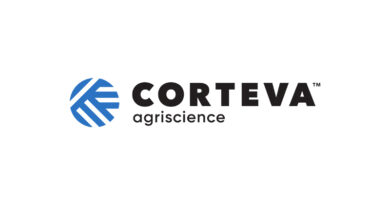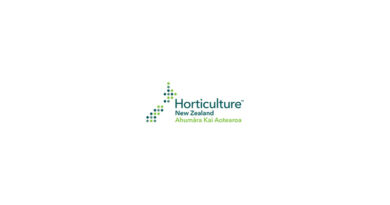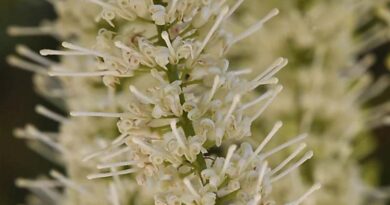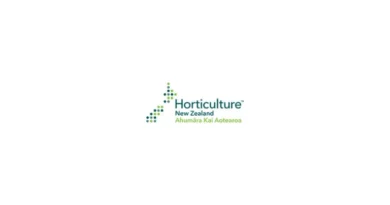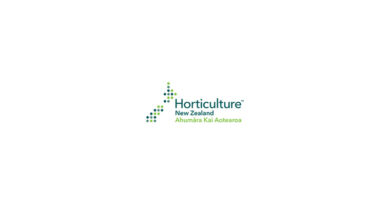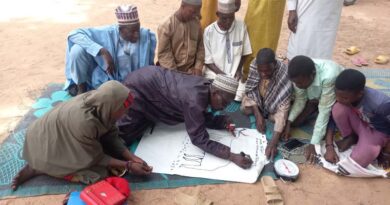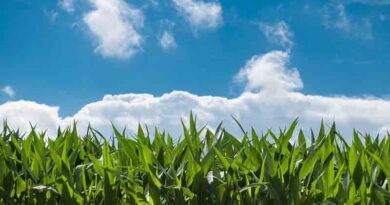Trial to triumph for Waitakere macadamia orchard
06 September 2022, NZ: Nearly four decades ago, John Brokx and Sue Vause bought a gorse-covered block of land in the foothills of the Waitakere Ranges near Auckland. Now the land is a well-established macadamia nut orchard that produces ten to 12 tonnes each year. HELENA O’NEILL talks to the couple about their organic operation, Macadamia Holdings.
In 1984, when John and Sue bought the ten-hectare property, it was undeveloped and covered in gorse. They gradually cleared the area and planted shelter belts while both working full-time jobs.
Initially, they planted 200 macadamia nut trees as a trial, but now have more than 2000 fruitful trees across seven hectares.
“We planted a couple of hundred trees initially because we didn’t have a horticulture background and we wanted to see how the macadamias coped with our property,” Sue says. “It was a gradual learning curve. John was in maintenance engineering, and I was doing quality control in lab work.”
Ten years into the venture, John and Sue opted to grow organically – a decision made to both improve the health of the soil and grow nuts without compromising the environment.
Macadamia Holdings encompasses the entire operation – from large-scale growing, to processing, to marketing the finished product.
Under its Why Nut? Organic Macadamias branding, the company has evolved to offer natural (raw), dry roasted and salted, milk chocolate and dark chocolate coated nuts, macadamia nut spread (both natural and dry roasted options), bulk nuts, bird food (ground macadamia nuts and shell) and ground nut shells. All its macadamias are sold domestically.
With a focus on sustainability in the orchard, nothing goes to waste. Sue says they are always looking to refine their operation and become more environmentally responsible.
Their drying room boiler has been designed to run predominantly on orchard waste, transforming tree prunings and macadamia nut shells into usable energy. Computers monitor the drying room, ensuring both energy and cost efficiency.
Smaller orchard pruning, nut husks and chicken manure are composted and returned to the trees as mulch, macadamia nut shells are used for gardening as well as road materials, and they even make their own fertiliser.
“We were also growing feijoas, but we removed them two years ago as they were a host for one of the pests for macadamias, the guava moths,” says Sue “We were sad to see feijoas go. We haven’t got the guava moth too badly here, but we want to protect our macadamia trees.
Sue says the green vegetable bug, Nezara viridula, is the orchard’s biggest pest.
“The bug pierces through the developing shell and stains the kernel. If the damage is too bad on a kernel it will drop prematurely from the tree,” she says. “It has got worse over the last few years with the warmer temperatures. We’re not spraying as we are organic, but even some of the growers who are conventional are finding they are having a greater problem with the bugs as well.”
Regular mowing is recommended to keep the grass and weeds under control, and John and Sue also run a few Wiltshire sheep and Kunekune pigs to keep the grass down and the orchard clear of debris.
Planting macadamia trees is a long-term commitment, with trees taking between five to ten years to produce nuts. To reach full production, orchardists can expect to wait 15 to 20 years.
“It’s not a get-rich-quick project,” Sue says. “Don’t leave it until you’re retired because there’s a lot of physical work.
Thankfully, Sue says macadamias aren’t high maintenance once the initial investment and physical work is done.
“They’re a forgiving tree if you’re not putting the time in because you’re working,” she says. “There are certain things like pruning that you should do as the tree responds better if you do it, but it’s not the end of the world [if you don’t].
“Macadamias aren’t as perishable as a leafy vegetable or flower crop that you have to pick at a certain time. It’s not so critical as you have quite a wide window for the harvesting and they’re quite a stable product – you can sell them over a few years if you have stored them properly.”
The harvest season seems to be getting earlier, the couple says, starting as early as May with the last of the nuts ripening towards October or November. Even on a single tree, individual macadamia nuts may ripen over several months.
“We harvest by hand or with a long-armed pruning tool,” says Sue. “The variety of macadamias that we have are called stickers, they stay on the tree. Some people have varieties that drop, but we are picking and stripping them off the tree.”
All seven varieties of macadamia trees on the orchard are stickers, a decision both John and Sue are glad they made given the climate and contour of their land.
“You have stickers and droppers,” John says. “The droppers fall on the ground and [as] we have quite a wet climate in New Zealand, they can easily develop fungus because you have to pick them up within a couple of days. Until you crack them open, you can’t tell the difference.”
“When you’re ready, you can pick the whole tree,” says John. “With droppers, they fall off over a period of time, so you need to go back to the tree all the time. When you have the right machinery and the right contour of the land, then droppers are easy. But most people don’t have that, and that’s when the problems come in.”
Sue says the nuts are mature when the lining of the husk is a medium to dark brown colour. When the nut is immature the lining is a cream colour.
“You can also do a test in a glass of water, remove a bit of the kernel and if it floats then the nut is mature,” she says. “If it’s on the bottom of the glass, then the oil content isn’t high enough. Just because the nuts are dropping it doesn’t mean that they’re ready. It could be due to insect damage or drought.”
John and Sue also process macadamia nuts for other nearby growers, with some coming as far afield as Whangarei and Gisborne for their specialist organic processing services.
“It’s important to remove the green husk on the outside, don’t leave them sitting in the husks, especially in the humidity because then they will develop moulds,” Sue says. “John has built all the machinery that we have here. It’s his passion, if he didn’t have that ability then we wouldn’t be processing nuts.”
As organic growers, the decision to process their own nuts was born out of necessity as the existing processors dealt with conventionally grown macadamia nuts.
“When we originally started growing, we didn’t know anything about macadamias,” says John. “There was no society or industry body.”
“As we grew and became big enough for a society [the New Zealand Macadamia Society] then we would go to other orchards. We went to one in Helensville and the guy running the orchard there was quite open and full of advice. But because we went organic then we had nowhere to process our nuts because they can’t be processed at a non-organic plant.”
Sue says that processing nuts for other growers at the same time their own orchard needs harvesting can sometimes be a challenge to balance because they all want to supply their markets.
Macadamia processing, the drying in particular, is extensive.
Macadamias need to be in the drying room for a minimum of three weeks before processing – although John and Sue’s method has a point of difference. “
“Some processors stipulate [the macadamias] should be partially dried to a ten percent moisture content [before they can be processed],” says Sue. “Nuts are about 23 to 25 percent moisture when they’re harvested. We don’t mind how wet they are, we just dry them. We think it’s better to get the drying process started for the quality of the kernel.”
While this is a different approach from other processors, John says it’s the safest decision for the quality of the macadamia nuts.
“If we get them when they come straight off the tree and we put them in our drying room, then we know that they are 100 percent safe and with no moulds,” he says. “We don’t weigh their [the other growers’] nuts at all until they are dry for processing. Then [when they are dry], we weigh them and count ten percent on top for the drying fee.
“For us, it’s a safeguard that we don’t have nuts that are contaminating other nuts.”
Right now, the orchard is in the middle of its harvest season. It’s a busy but rewarding time for both John and Sue as they pick their own macadamias and process those harvested by other growers.
“I enjoy what I’m doing, I don’t do it for the money,” John says. “I’m not retired, I should be, but I’m not.” John jokes that growing macadamias is a life sentence.
“You like it, or you hate it,” he says. “Once you start, it’s hard to get out. I have to think that we have succeeded at what we set out to do.”
Also Read: Tur dal seed coat has six times more calcium than milk: ICRISAT
(For Latest Agriculture News & Updates, follow Krishak Jagat on Google News)

